Flowers are the main decoration of any plot or garden, so many owners of their own homes try to find and plant the most unusual and interesting cultures. However, many exotic flowers are quite complex in cultivation, so it is better to give preference to more unpretentious plants.
This can include a multi-year Koreopsis, which, as if the sun in the garden, will delight you with your bloom for a long time. This plant is very diverse in its appearance, so you can easily choose your grade and decorate them a flower garden. At the same time, forces and work when landing and care, you spend quite a bit.
In this article, we will consider the features and description of the long-term koreopsis, as well as note the main characteristics of the main species and varieties of this plant.
Features and description of the Koreopsis Perennial
Coreopsis is a perennial herbaceous plant, which belongs to the Astrov family or complex family. All koreopsis can be divided into two large subgroups: annual and perennial. However, perennial species of this plant are more popular and numerous. If the whole types of yellow chamomile 10, then it is 8 years old. The natural area of \u200b\u200bhabitat of this bright flower is considered the territory of South and North America, Africa, sometimes these flowers can meet in the Hawaiian Islands.
Coreopsis Perennial can often be grown in gardens as an annual plant, but even despite this flower golden yellow color will certainly become a central decoration of a garden or a flower garden. In its appearance, most varieties of Coreopsis have similar characteristics and sometimes confused and can distinguish. Let's consider the main characteristics of the appearance of this long-term flower.
The Koreopsis Flower received its name from the Greek word, which in the translation denotes "similar on the cloud". This is a simple explanation, because the small seeds of this plant are very similar to ordinary bedlop. Sometimes Koreopsis is called a galaxy, a golden chamomile, "Parisian beauty", "maiden eyes".
Description of the Koreopsis Perennial:
- For the most part, Koreopsis is a long-term a grassy plant, but sometimes there are also species growing in the form of shrubs and semi-stares.
- Stems in the plant are a reprehension and very branched. Height can reach from 20 cm to 1 m, which allows them to find them the optimal place on the site or on the flowerbed.
- The underground of the flower is represented by urine roots. And since it is a perennial plant, it is inherent in seed and vegetative reproduction.
- All stem is thickly covered with leaves, which differ depending on their location. The root leaves are rather large all-string, and the strokes can be perista-separated or palpal, they are located oppositely.
- Foliage in color can vary from light green to dark green.
- All branched stalks end with long flowerflower with floral baskets.
- Single inflorescences, have a basket shape to 8 cm in diameter.
- Baskets can be terry or simple, consisting of gear burglar petals and tubular in the center.
- The colors of Coreopsis flowers can be all shades of yellow, red, pink, purple, or even brown.
- Blossom starts from around the end of June and lasts almost to the most frosts.
- After the end of flowering on the tops of the stems, fruits are formed - the oblong seeds of black color with a large number of very small seeds.
- The seeds of the Koreopsis of many years retain the germination for 2-3 years.
A variety of species and varieties of Koreopsis Perennial
Total today is known about 100 varieties of Koreopsis, but only 30 species are grown in culture. They all differ in the height of the stem, the coloring inflorescences and the conditions of cultivation, although most of these plants are perfectly winter even in the conditions of our harsh winter. Consider in more detail the features of the most popular and common types and varieties of the Koreopsis Perennial.
Koreopsis large-flowered
- The natural habitat is the territory of the southeastern United States.
- This species is the most common flower of Coreopsis in gardening.
- Great for inexperienced flower flowes, as it is characterized by special unpretentiousness.
- The height of this herbaceous plant can be different. There are tall varieties, and there is a wide variety of dwarf plants. On average, the height can be from 30 cm to 100 cm.
- It has the appearance of a very branched cooking, which consists of a large number of stalks.
- Stems upright and very durable.
- Foliage completely covers the shoots of the plant. Located the leaves oppositely, almost without root. At the bottom of the plant, the leaves are solid, and in the upper - half-disseated.
- The tops of the stems are completed by rather large inflorescences, which in diameter can reach 8 cm. Inflorescences are presented in the form of a basket.
- The flower consists of tongue gear petals of yellow and tubular dark yellow shade.
- This type of Coreopsis needs a periodic update. About once every 3 years need to be replant.
Popular varieties of Koreopsis Large-flowered:
- Grade "Baden Gold". Tall grade plant, which can reach 90 cm in height. The flowering begins in June, when the average size of inflorescences in diameter is dissolved on shoots in diameter to 6.5 cm.
- Majfield Giant variety. Also a tall plant, which, with favorable conditions, can reach 90-100 cm. Flowers large up to 8 cm in diameter with bright golden yellow flowers.
- Grade "Calypso". Buckets in height up to 50 cm. Different with motley color foliage.
- Grade "Sandanser". The dwarf variety of the Koreoplepsis of many years, which in height can reach only 20-30 cm. Inflorescences have a terry form.
Coreopsis multi-year mutual
- A rare guest in our gardens and flower beds.
- May grow in one place for more than 6 years.
- Strengthening, highly branched stems form a small compact bush, which in height can reach 40-60 cm.
- Leaves are densely located on shoots, are sedentary. In the form of strongly dissected, constitute a large number of needle-like leaflets collected by mutual. Hence the name of the species.
- Inflorescences have a shape of a basket in the form of a star with a diameter of up to 3 cm, consisting of their narrow oblong petals.
- Language and tubular petals of golden yellow color.
- Blossom begins in June and lasts until the end of August.
Popular varieties of Koreopsis Mutovsky:
- Sort "Zagreb". A low bush up to 40 cm in height. Flowers with small golden flowers with a darker core.
- Variety "Sun". The dwarf variety of Coreopsis of the Mutovnaya, which grows only by 30 cm. Inflorescences are yellow with red splashes in the center on the tongue petals.
Koreopsis Lanzetoid
- In nature, this type of plant grows in the territory of Western Europe, the west coast of America and Canada.
- This plant grows in the form of bushes, which can grow up to 60 cm.
- Buckets are formed by reprehensible, very branched stems.
- This type of Coreopsis is distinguished by a peculiar form of leaves - they are oblong or lanceal.
- All the leaves are mainly located in the root part of the flower, there are practically no top on the top.
- Inflorescences in the form of a bright yellow basket, which in diameter can reach 6-8 cm.
- In the form of inflorescence, terry, slightly drooping.
- The flowering of Coreopsis Lancetovoid begins in July.
Popular varieties:
- Grade "Golden Quen". Buckets up to 60 cm high with bright golden yellow inflorescences.
- Goldfink variety. Dwarf variety of this type of plant, height can grow by 30 cm.
Coreopsis Ushroty
- A rather low look of the plant that grows most often by 20-30 cm, less often by 50-60 cm.
- Stems upright and very branched, which form a dense and compact bush.
- The leaves of the rounded shape, slightly oblong.
- All leaves are most often collected in the root rosette and only a few are located on the stems.
- Middle Size Inflorescences can reach about 4.5 cm in diameter.
- On coloring, flowers can be yellow or orange.
- Blossom begins in the late spring or early summer.
Popular varieties:
- Sort "Nana". Little grade plant, which blooms bright yellow-orange inflorescences, very similar to daisies.
Koreopsis Pink
- This type of plant belongs to short and rarely grows above 30-40 cm.
- Stems upright, form a compact and very decorative bush.
- All stems are densely dodged with narrow and oblong leaves.
- Inflorescences Single pink shades.
- Flowers are small, only 2-2.5 cm in diameter.
Popular varieties:
- Variety "Amerikhan Dream". Medium-sized plant. In height can reach 40 cm. Colors of single gentle light pink color.
- Sort "Sweet Dream". Plant with bright two-color inflorescences. The middle of the raspberry, and the edges of the petals are white.
Reproduction of Koreopsis Perennial: The most common ways
Perennial koreopsis can be dispelled independently without any problems, for this it is only necessary to know the subtleties of breeding methods. This plant breeds with the help of seeds, the division of the bush and stalling. You just need to decide what is best for you specifically for you and your chosen variety.
Coreopsis multi-year. Seed reproduction
- In this way, almost all types and varieties of Koreopsis Perennial are breeding. The exception is only hybrid varieties and grades with terry inflorescences. If you grow a koreopsis with seeds, the plant can lose all its decorative qualities.
- Seeds can be sown in the spring and autumn under the snow, as they perfectly carry the cold.
- Perhaps two options for the reproduction of this plant with the help of seeds: immediately in open ground or in the seedlings containers. Many rare species are best breeded by a seaside way. In addition, with the help of seedlings, you will quickly get flowering plants.
- To obtain seedlings, it is necessary to prepare containers.
- Next, fill them with a suitable soil mixture, which should consist of sand and garden land.
- Soil in boxes should be moistened and loose.
- Seeds are sown in March or April.
- It is necessary to sow them to the surface of the moistened soil.
- Containers must be put into a light and warm room. Regularly behind seedlings need to be careported. Moisturizing the soil.
- After the appearance of two or three leaves, seedlings need to be divened to individual pots. After the appearance of 5-6, they are picked again.
- In the open ground, seedlings can be planted already in May.
- The cultivation of Koreopsis from seeds allows you to get hardened and strong plant seedlings.
- If you decide to search for seeds directly into open ground, then it is best to do it in May.
Coreopsis multi-year. Reproduction of the division of the bush
- This method is the easiest and rapid. It gives almost one hundred percent result
- The best time to reproduce the Koreopsis Perennial Early Spring. More precisely, when the cold will completely retreat.
- If several plants grow on the plot, choose the healthiest and strong bush.
- Next, gently shry the soil around the Coreopsis and carefully remove the plant. Watch not to damage the root system.
- Next, you need to take a sharp knife and carefully divide the parent plant into several parts. Each deleted must have 2-3 kidneys and roots.
- After that, it is necessary to land the Coreopsis in advance prepared wells with moisturized and fertilized soil.
- First time after landing, the young plant needs abundant irrigation for faster rooting.
- Using the division of the bush, all types of many years of Koreopsis must be searched once every 3-4 years. It is during this time that the plant has time to lose all its decorative qualities.
Coreopsis multi-year. Pencornia reproduction
- This method is applied much less than previous.
- The best time to prepare cuttings is the beginning of summer, and more specifically June.
- Choose a healthy and strong plant on the site.
- For cuttings, young and healthy shoots are suitable on which there are leaves.
- Cut the planting material about 10 cm below the place where the node is located.
- From the bottom of the cuttings, all leaves are necessarily removed.
- To accelerate the rooting process, you can hold the cuttings in the solution of the rooting agent.
- Next, the cuttings are rooted in ordinary pots or in a greenhouse into the soil.
- For a full and fast rooting of cuttings, a light half and regular watering is necessary.
- After rooting the planting material, Koreopsis can be planted at a permanent place in open ground.
Stages of preparation before landing Coreopsis Perennial
Although Koreopsis is an unpretentious plant, however, for its full growth, it is still necessary to create specific conditions. First of all, it is important to carefully prepare before landing, and for this you need to purchase high-quality and healthy seedlings, choose the optimal place to plant and prepare the soil.
Stage 1. Selection of landing material Koreopsis Perennial
- The first step will be the definition of which planting material you will use: seeds or seedlings. If you want to get a flowering plant before. Then the seedlings are suitable for you.
- Seedlings of the Koreopsis of many years can be grown independently. The whole process was described above.
- As an option, the planting material you can easily purchase in any specialized store or agrofirma that are engaged in professional breeding plants.
- Before buying seedlings, we definitely consider the future garden composition, which will depend on the specific type and variety of the plant. Tall plants pick up for single or group landings, as well as for planting a perennial koreopsis in the background of the flower bed. Dwarf varieties are perfect for the framing of garden tracks or borders, as well as for flower beds and flower beds.
- It is also important before buying thoroughly check the condition of the plant. It should not be visible damage and signs of diseases and the presence of pests. Leaves must be elastic without yellowness.
Stage 2. Choosing a place to land Koreopsis Perennial
The correctly chosen place for landing Coreopsis is the key to the lush flowering of the plant and its full growth. Not in vain call this flower with a solar chamomile, because it really requires sunny and outdoor space. Only in such conditions, Koreopsis will delight you with bright inflorescences. In the shady segment, these plants can bloom very weak and can even be overthrown.
The choice of space for the landing of Koreopsis depends primarily from the garden composition with you. Tall varieties of plants landed on the back of the flower garden. As an option, they can land a small group on the lawn or organize a single chaotic landing. Lower varieties are perfect for the site along the tracks or the edge of the flower.
Stage 3. Choosing and preparation of the soil for landing Coreopsis Perennial
These plants prefer to grow on fertile and moderately fertilized soils. Also, for their full growth, a good drainage is needed, since the root system can start to rotate from the long stagnation of water. Before boarding, it is important to carefully switch the selected place. If the soil is heavy and clay, it is necessary to add some sand into it, as well as compost.
TECHNOLOGY OF THE CORAOPSIS PEETING
- Depending on the method of planting Coreopsis, the time of this process will vary. Seeds can be sung right in the open soil in spring or autumn under the snow. If you are seedlier, its landing is carried out in spring, or rather in May. It is at this time that the threat of return freezers retreats.
- Before boarding, you need to prepare the soil mixture suitable for this plant. It should consist of peat, fertile soil and organic fertilizer per 35 grams of 1 sq m.
- Next prepare the landing wells. Their depth should be slightly larger than the root seedlings along with the soil.
- If you sit down a few plants nearby, be sure to follow the distance between the colors. For tall varieties, it is approximately 30 cm, and for dwarf - 15-20 cm.
- At the bottom of each landing pit, it is necessary to place a drainage layer to prevent long-grained water in roots. As a drainage, clean river sand or gravel can be used.
- Next, add a bit prepared soil mixture and moisturize it.
- Moisten also the soil in the pots with seedle to get them without damage.
- Gently remove the seedlings and place them in the landing wells, while carefully sprinkle with the soil and press your hands.
- After planting abundantly, paint each plant.
Agrotechnical cultivation of Coreopsis Perennial: Secrets and Nuances of Care
Beautiful and magnificent bushes of the Koreopsis Perennially with bright and sunny colors requires a small but careful care. The main stages of care for Koreopsis is timely watering, loosening and fertilizer of the soil, as well as the struggle against pests and diseases.
Watering plants
Coreopsis Perennial is a drought-resistant plant, however, for full growth, he needs regular and moderate watering. Watering the plant should be abundantly only in a period of severe summer drought. Try not to fill the plant, as it does not take out the stagnation of water in the roots, because it may die.
Loose and support for the plant
Periodically, after irrigations, it is necessary to loosen the soil around your colors, as the Koreopsis of many years prefers to grow on loose and light soil. During loosenings, be sure to remove all weeds, they can slow down the growth and development of the plant. If you grow tall varieties of this cult on your site, then you will definitely think about a reliable support, since the bushes can be bent under the weight of inflorescences or any impulse of the wind can break them.
Also remember that the plant must be replanted every 4-5 years. For more magnificent flowering of the plant, you can remove faded buds, which will contribute to the tide of all the plants for the formation of new colors.
Podchar
Coreopsis is very sensitive to making feeding. With their excess, the plant can stop blossoming, but will only increase the green mass. The first feeding is made during the landing in the form of organic fertilizers in the proportion of 35 grams per 1 sq. m. The second feeding is made during the flowering of the plant. During this period, the organic can also be used, and more specific compost, or complex mineral fertilizers. You can feed the plant with a compost and in the fall so that it will have to accumulate strength for wintering.
Fighting diseases and pests
Sometimes you have to show the plant maximum attention and care, as it can be damaged by various diseases and exposed to the invasion of pests.
Diseases:
- Rust. With this fungal disease, brown spots may appear on the leaves of the plant. To combat it, special drugs of fungicides are used, as well as the removal of damaged leaves.
- Fusariosis. Also a fungal disease that is successfully treated by fungicides.
- Spottedness. This is a more serious illness that belongs to the viral group. Unfortunately. There is no treatment from it. Therefore, when you appear on your plant twisted faded leaves, be sure to remove all the plant and burn it. And the place where it grew, treat drugs.
Pests:
- Aphid. This is the most frequent pest of Koreopsis Perennia. Insecticides are used for its struggle.
Preparing the Plant for Winter
Before the onset of cold weather, be sure to do all the shoots, leaving small penets. Coreopsis is considered a winter-hardy plant, but it will not hide the plant with a small layer of foliage.
Using Koreopsis Perennials in Landscape Design
Coreopsis is widely used in modern landscape design and all thanks to its long and bright flowering.
- The lowest varieties of the plant will look great as peculiar borders along the tracks or various garden compositions.
- Low plants are suitable for containers or pots, which can be originally placed on the site.
- Tall flowers are suitable for flower beds and various flower beds, where their location will be determined by a height.
- Coreopsis can be planted single or groups on the background of lawn.
- Interestingly low grades look in rocories among stones.
Stock Foto Coreopsis in landscape design
It is possible to more clearly see all the features of the appearance of the plant and the options for its use in the decoration of the site can be on the photos proposed below.
Koreopsis Perennial - a bright and beautiful flower, which will certainly help you transform your plot and create a joyful and sunny mood on it.

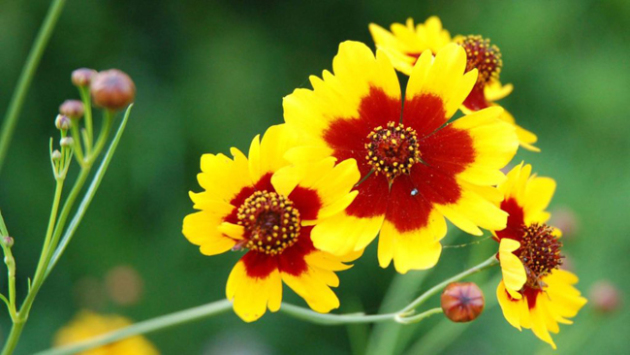
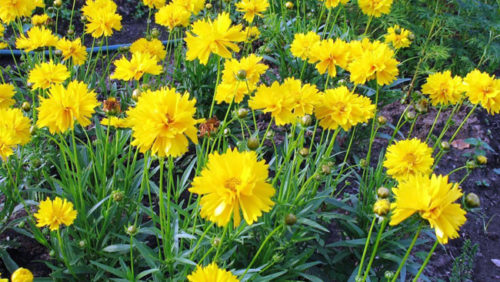
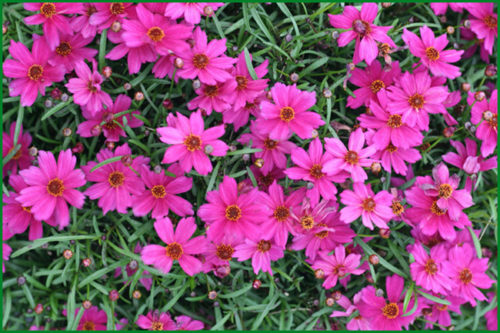
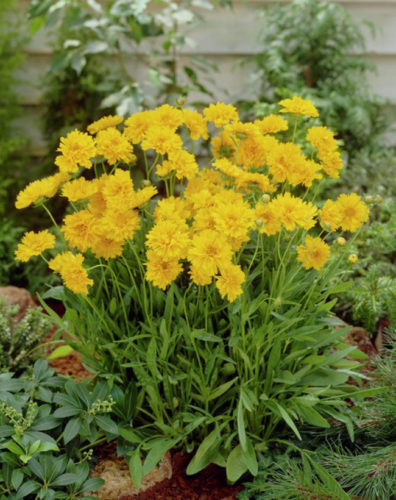
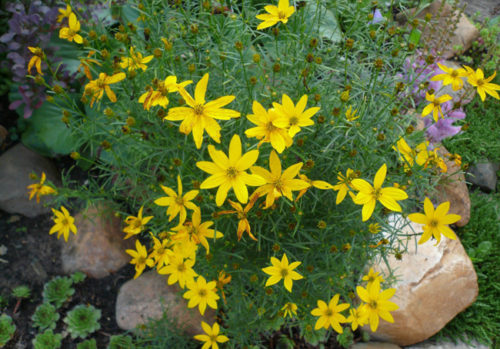

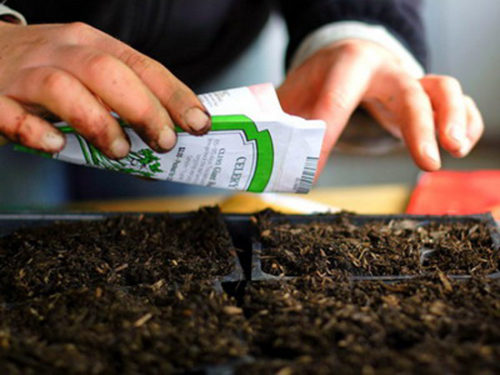
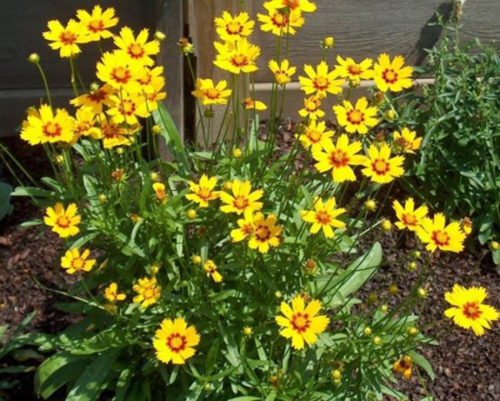
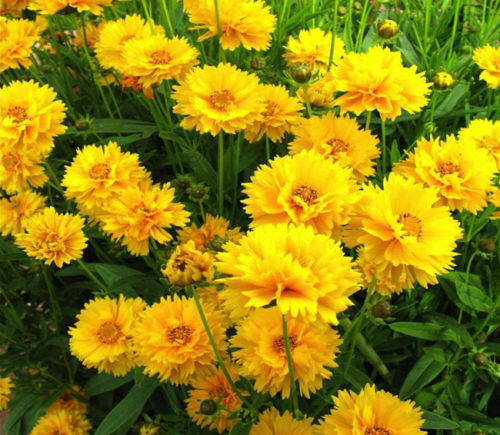
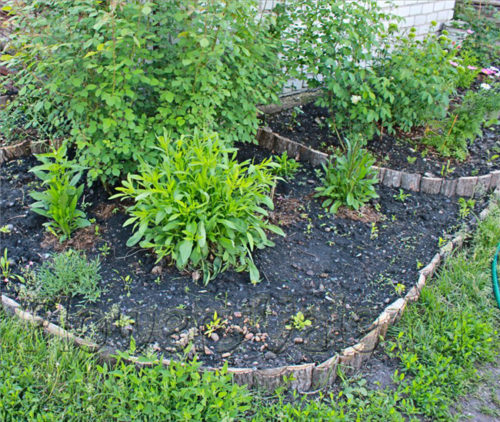
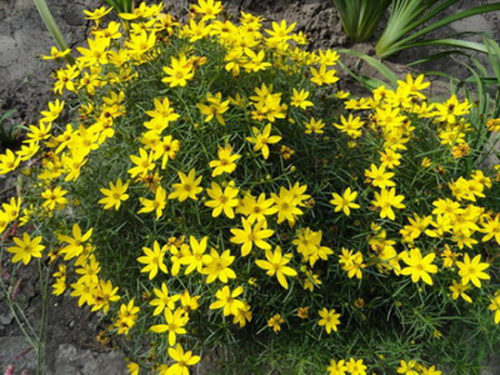
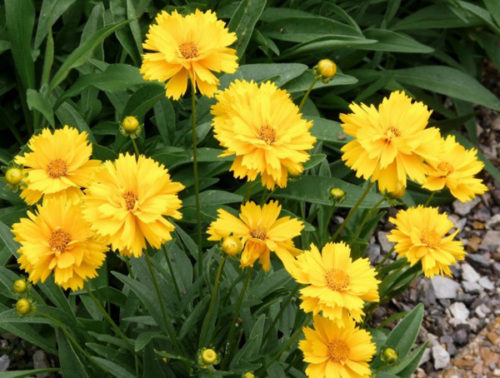
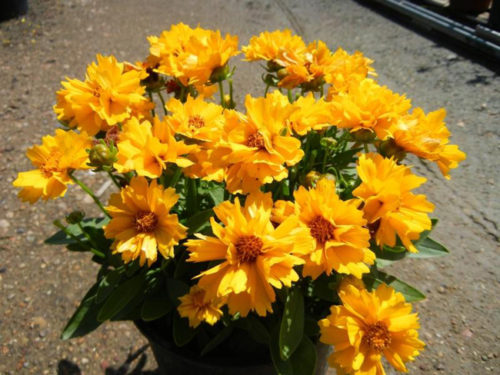
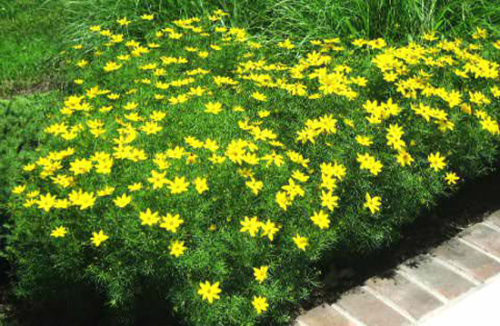
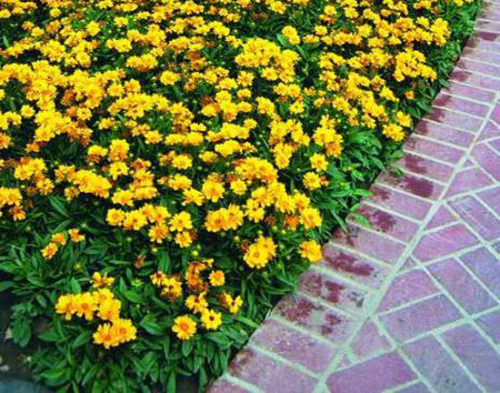
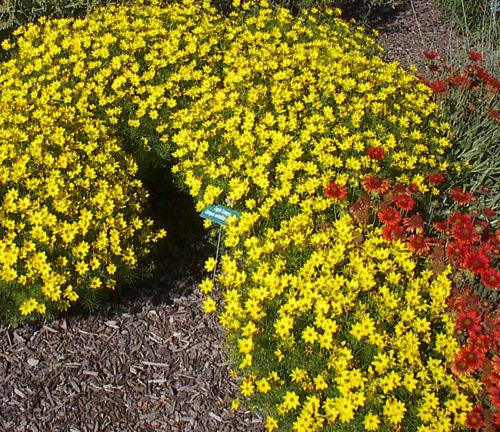












 Start a discussion ...
Start a discussion ...